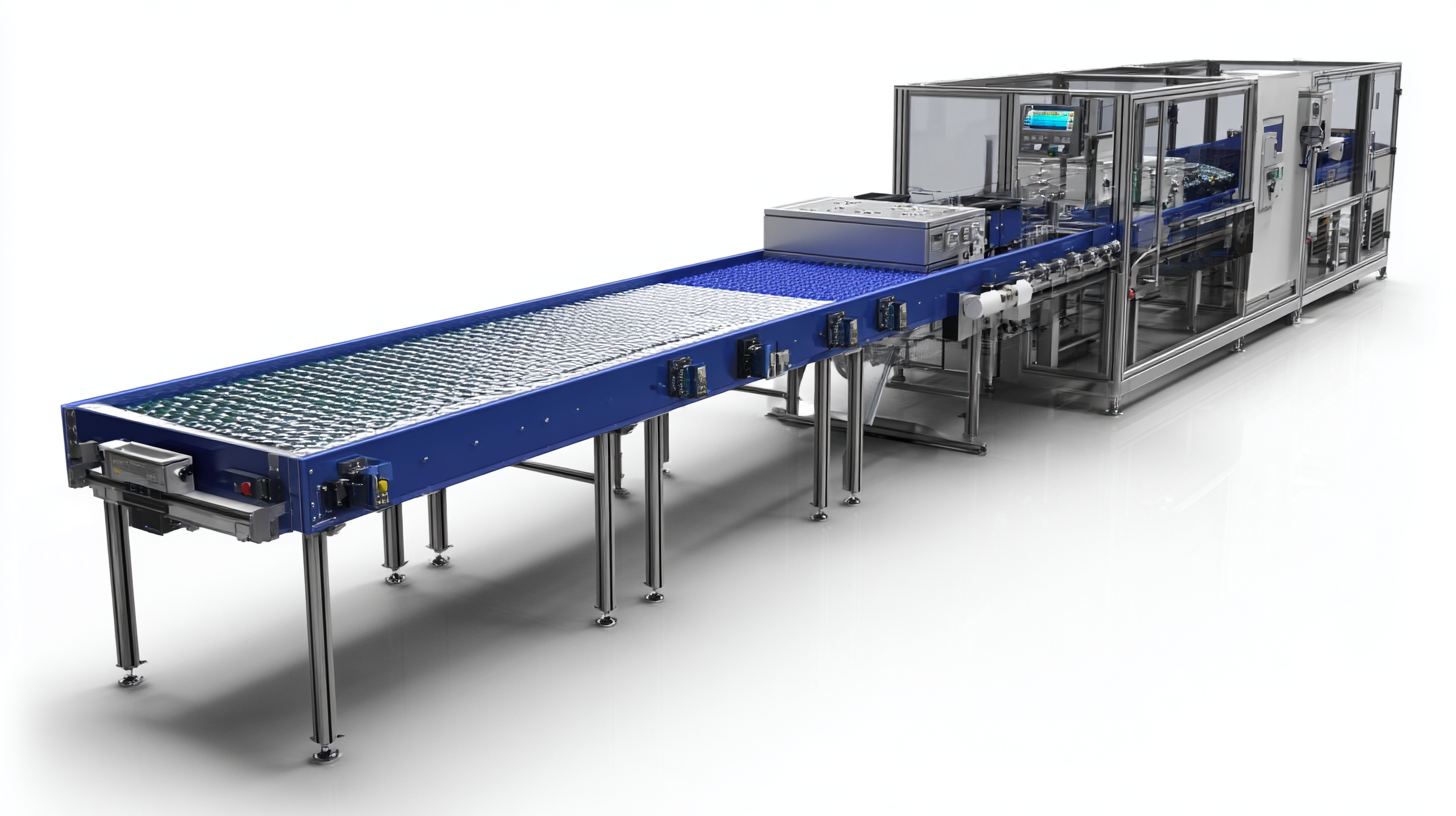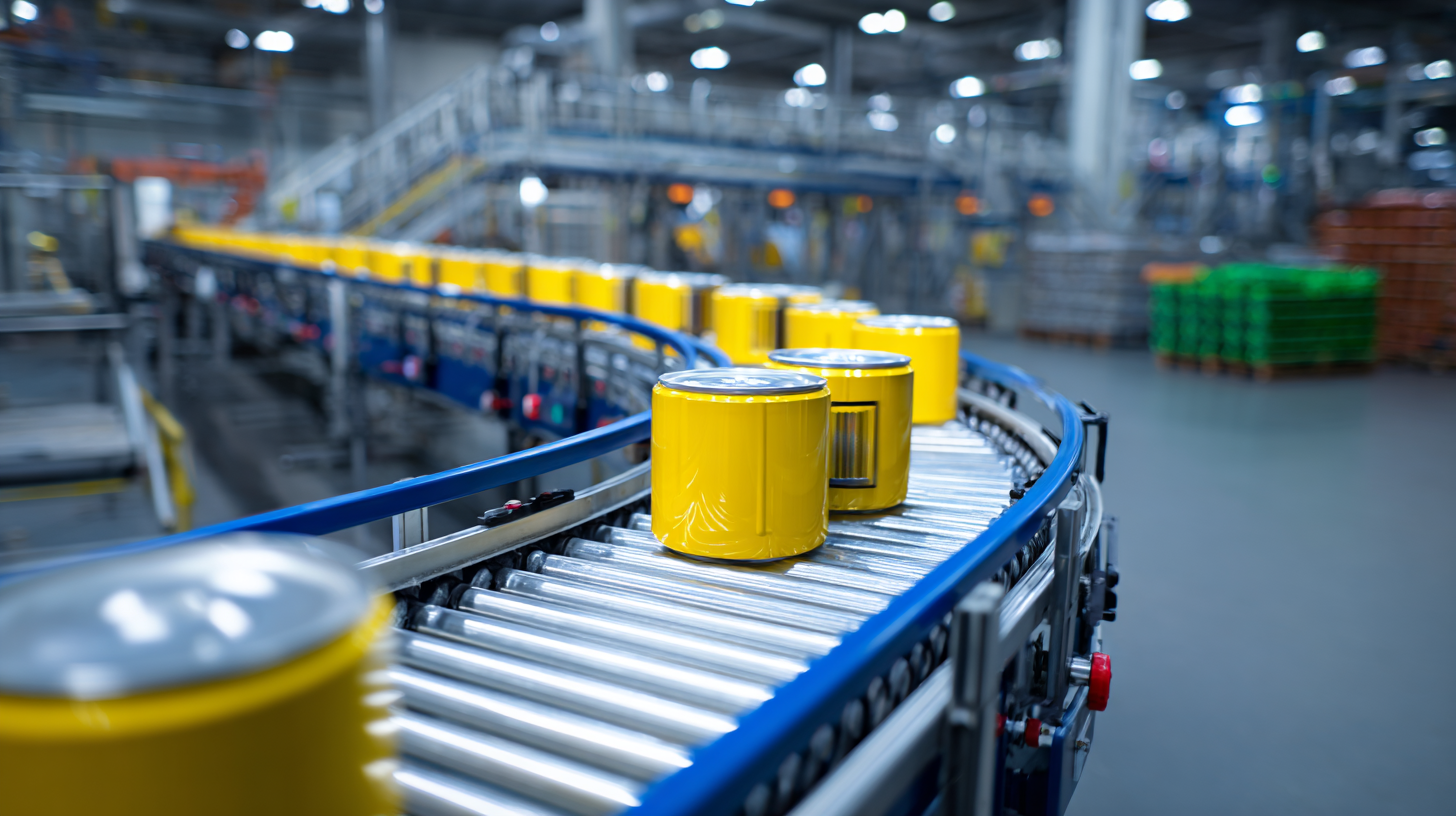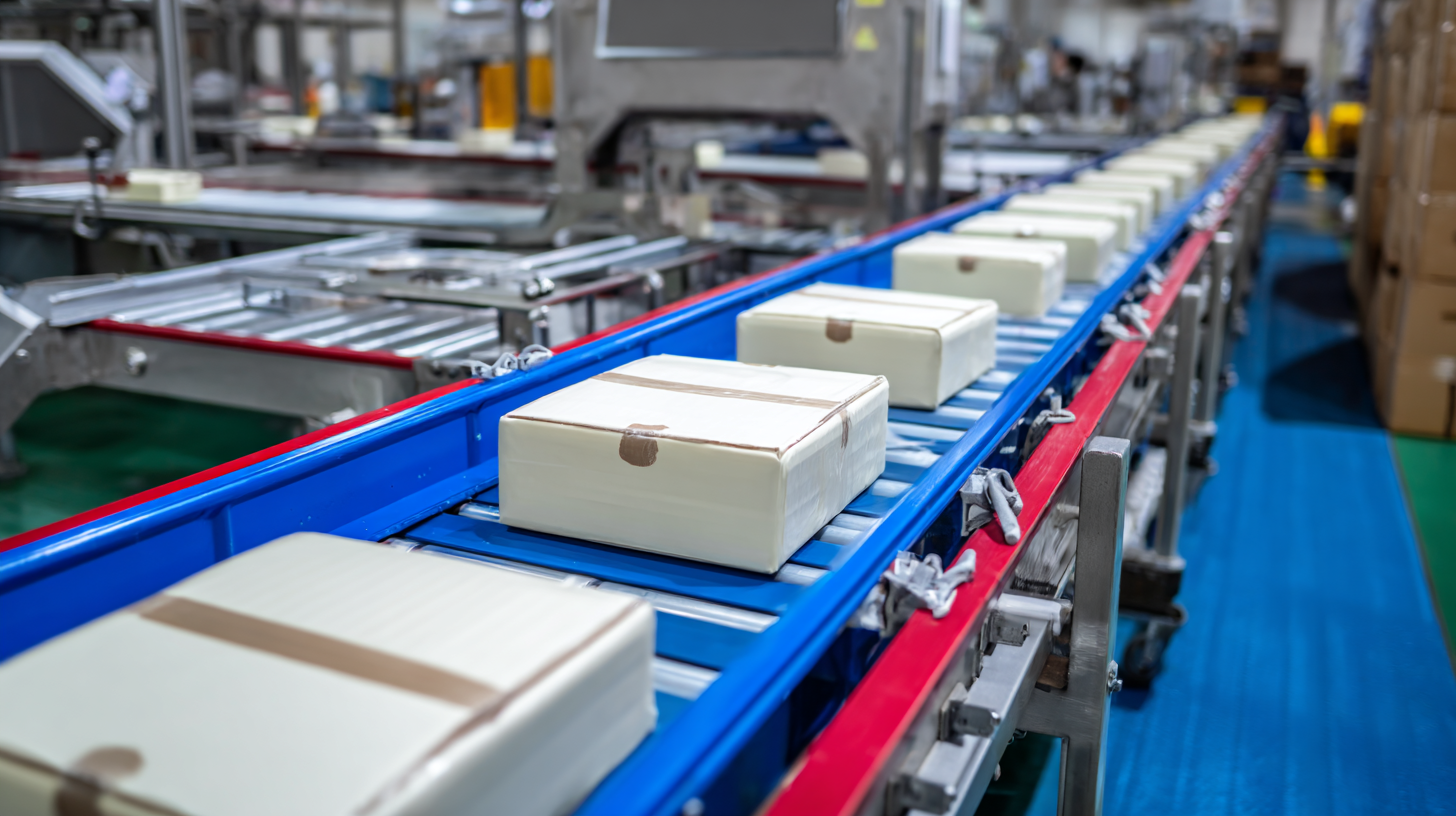How to Choose the Right Packaging Conveyor Belt for Your Production Line Needs
Table of Contents
- Understanding Different Types of Packaging Conveyor Belts and Their Applications
- Key Factors to Consider When Selecting Conveyor Belt Materials for Durability
- Industry Insights: Current Trends in Packaging Conveyor Belts for Efficiency
- Maximizing Production Output: The Importance of Belt Speed and Load Capacity
- Cost-Benefit Analysis: Investing in Quality Conveyor Belts vs. Initial Savings
- Maintenance Tips: Ensuring Longevity and Performance of Conveyor Systems
- FAQS
- Conclusion
- Related Posts
In today’s fast-paced production environment, selecting the right Packaging Conveyor Belt is crucial for enhancing efficiency and reducing operational costs. According to a report by Grand View Research, the global conveyor systems market is projected to reach USD 9.9 billion by 2025, underscoring the increasing reliance on advanced conveyor solutions across industries. At Changshuo Conveyor Equipment (Wuxi) Co., Ltd., we specialize in a comprehensive range of conveyor systems, including tailor-made belt conveyors, flexible chain conveyors, and modular belts, ensuring that we meet the diverse needs of production lines. With the right Packaging Conveyor Belt, manufacturers can optimize their product handling processes, improve workflow, and ultimately drive profitability. As you navigate the myriad options available, understanding the specific requirements of your production line will be key to making an informed choice that enhances performance and sustainability.

Understanding Different Types of Packaging Conveyor Belts and Their Applications
When selecting the right packaging conveyor belt for your production line, it’s essential to understand the various types available and their specific applications. According to a recent report by MarketsandMarkets, the packaging conveyor systems market is projected to grow at a CAGR of 4.6% from 2023 to 2028, emphasizing the importance of making informed decisions. Conveyor belts can be categorized into several types, including modular plastic belts, fabric belts, and metal belts, each serving different functional requirements.
Modular plastic conveyor belts, for example, are highly versatile and ideal for packaging applications that require easy cleaning and maintenance, such as in the food industry. A study by the Food Safety and Inspection Service reported that over 30% of food recalls are linked to contamination, highlighting the need for hygienic processing systems. Fabric conveyor belts, on the other hand, provide excellent grip and are suitable for lightweight and delicate packaging tasks. Meanwhile, metal belts are robust and often utilized in high-temperature applications, making them perfect for industries such as pharmaceuticals, where precise handling is crucial. Understanding these differences can significantly enhance operational efficiency and contribute to meeting production line needs effectively.
How to Choose the Right Packaging Conveyor Belt for Your Production Line Needs
| Belt Type | Material | Load Capacity (lbs) | Speed (ft/min) | Applications |
|---|---|---|---|---|
| Modular Plastic Belt | Plastic | 300 | 100 | Food Packaging, Consumer Goods |
| Fabric Belt | Fabric | 200 | 75 | Assembly Lines, General Manufacturing |
| Rubber Belt | Rubber | 500 | 50 | Heavy Loads, Industrial Applications |
| Stainless Steel Belt | Stainless Steel | 400 | 60 | Pharmaceutical, Food Processing |
| Wire Mesh Belt | Metal | 350 | 90 | Cooling, Frying Applications |
Key Factors to Consider When Selecting Conveyor Belt Materials for Durability
When selecting the right packaging conveyor belt for your production line, one of the most critical aspects to consider is the durability of the materials used. According to a report by the Freedonia Group, the demand for conveyor belts is projected to grow at a rate of 3.8% annually, with material quality playing a key role in this expansion. Materials such as polyurethane and PVC are popular choices due to their resistance to abrasion and chemicals, which can significantly extend the lifespan of the conveyor system.
Another crucial factor is the operating environment of the conveyor system. For instance, in food processing industries, it’s essential to choose materials that not only withstand temperature fluctuations but also meet stringent hygiene standards. Research from the Conveyor Equipment Manufacturers Association (CEMA) indicates that belts made from food-grade materials reduce contamination risks and enhance the overall efficiency of production lines. Evaluating the specific application requirements and matching them with the right materials ensures optimal performance and reduces the frequency of replacements, ultimately leading to cost savings in the long run.
Industry Insights: Current Trends in Packaging Conveyor Belts for Efficiency
In recent years, the packaging industry has witnessed significant advancements in conveyor belt technology, driven by the need for increased efficiency and productivity. One notable trend is the shift toward modular conveyor systems that offer flexibility and scalability. These systems allow manufacturers to customize their production lines according to changing demands, making them an ideal choice for businesses that experience fluctuations in volume. Additionally, the integration of smart technology, such as sensors and IoT connectivity, enables real-time monitoring and predictive maintenance, reducing downtime and optimizing performance.

Another emerging trend is the focus on sustainability. Packaging conveyor belts are now being designed with eco-friendly materials and energy-efficient motors, aligning with the global push for greener manufacturing practices. Companies are increasingly aware that sustainable operations not only benefit the environment but also enhance their brand image and compliance with regulations. As consumer preferences shift toward sustainable products, leveraging eco-friendly conveyor belts can give businesses a competitive edge in the market while contributing to a more sustainable future.
Maximizing Production Output: The Importance of Belt Speed and Load Capacity
When selecting the right packaging conveyor belt for your production line, belt speed and load capacity are crucial factors that can significantly impact your output. High belt speed ensures that products move quickly through the packaging process, optimizing efficiency and reducing bottlenecks. It's essential to analyze your production rate and determine the ideal speed that balances between rapid delivery and product safety to prevent damages.
Tips: Consider the specifications of your operation. If your products are heavy or awkwardly shaped, ensure that the load capacity of the conveyor belt can handle the maximum weight without strain. A belt with insufficient load capacity could lead to early wear or failure, disrupting your workflow and resulting in costly downtime.
Tips: Perform tests before finalizing your choice. Run trials with different belt speeds to find the optimal performance for your production line. Adjustments might be needed based on the nature of your products and the complexity of your packaging processes. Establishing the right speed and load balance will not only maximize output but also contribute to long-term reliability and efficiency in your production line.
Cost-Benefit Analysis: Investing in Quality Conveyor Belts vs. Initial Savings
 When selecting a packaging conveyor belt, a critical factor to consider is the cost-benefit analysis of investing in high-quality conveyor belts versus opting for cheaper alternatives. According to a recent industry report by the Conveyor Equipment Manufacturers Association (CEMA), high-quality conveyor belts can enhance operational efficiency by up to 30% due to reduced downtime and maintenance needs. While the initial investment may be higher, the long-term savings can significantly outweigh these costs, positioning businesses for sustainable growth.
When selecting a packaging conveyor belt, a critical factor to consider is the cost-benefit analysis of investing in high-quality conveyor belts versus opting for cheaper alternatives. According to a recent industry report by the Conveyor Equipment Manufacturers Association (CEMA), high-quality conveyor belts can enhance operational efficiency by up to 30% due to reduced downtime and maintenance needs. While the initial investment may be higher, the long-term savings can significantly outweigh these costs, positioning businesses for sustainable growth.
Tip: When evaluating conveyor options, calculate the total cost of ownership (TCO) rather than just the purchase price. This includes not only the upfront cost but also costs related to maintenance, energy efficiency, and potential downtime.
Additionally, research shows that businesses using premium conveyor belts typically experience a 25% reduction in product damage and waste, which is crucial in maintaining inventory quality and customer satisfaction. Investing in a quality conveyor belt can lead to lower operational costs overall, as these belts are designed to withstand heavier loads and harsher conditions, reducing the frequency of replacements.
Tip: Consider the specific demands of your production line, such as load capacity and speed, when choosing a conveyor belt to ensure it meets both present and future needs, thus maximizing your return on investment.
Maintenance Tips: Ensuring Longevity and Performance of Conveyor Systems
Maintaining a conveyor belt system is crucial for ensuring optimal performance and extending its lifespan. One of the key maintenance tips is regular inspection. Operators should conduct visual assessments to identify signs of wear or damage, such as fraying edges or cracks in the belt. Additionally, checking for proper tension and alignment will not only help in preventing premature wear but also minimize the risk of unexpected downtimes.
Lubrication is another vital aspect of conveyor system maintenance. Regularly applying the recommended lubricants to moving parts can significantly reduce friction and wear, leading to smoother operation. Furthermore, it is essential to keep the area around the conveyor clean. Dust and debris can accumulate in the system, causing increased wear or even mechanical failures. Implementing a schedule for cleaning and maintenance tasks can help create a more efficient production environment and safeguard the integrity of your conveyor system.
FAQS
: The main types of packaging conveyor belts include modular plastic belts, fabric belts, and metal belts, each serving different functional requirements suited for various industries.
Modular plastic conveyor belts are highly versatile and easy to clean, making them ideal for hygienic processing systems crucial in the food industry, which faces contamination risks.
Fabric conveyor belts provide excellent grip and are well-suited for lightweight and delicate packaging tasks, ensuring products are safely transported.
Metal conveyor belts are robust and often utilized in high-temperature applications, making them perfect for industries like pharmaceuticals where precise handling is critical.
Current trends include the adoption of modular conveyor systems for flexibility, integration of smart technology for real-time monitoring, and a focus on sustainable manufacturing with eco-friendly materials.
High-quality conveyor belts can enhance operational efficiency by up to 30% due to reduced downtime and maintenance needs, making them a worthwhile investment despite higher initial costs.
Businesses should calculate the total cost of ownership, considering not just the purchase price but also maintenance, energy efficiency, and potential downtime, ensuring the conveyor belt meets both current and future production needs.
Businesses using premium conveyor belts typically experience a 25% reduction in product damage and waste, which is crucial for maintaining inventory quality and customer satisfaction.
There is a growing focus on sustainability, with conveyor belts being designed using eco-friendly materials and energy-efficient motors, helping companies enhance their brand image and comply with environmental regulations.
Modular conveyor systems offer flexibility and scalability, allowing manufacturers to customize their production lines based on changing demands, making them ideal for businesses that experience fluctuations in volume.
Conclusion
Choosing the right Packaging Conveyor Belt is crucial for optimizing your production line. Understanding the various types of conveyor belts and their specific applications allows businesses to tailor solutions that meet unique operational needs. Key considerations like material durability, belt speed, and load capacity are essential for maximizing efficiency and output.
Current industry trends highlight the importance of investing in high-quality conveyor belts, as the long-term benefits often outweigh initial savings. Regular maintenance is also vital to ensure the longevity and performance of conveyor systems. At Changshuo Conveyor Equipment (Wuxi) Co., Ltd., we specialize in providing a wide range of conveyor solutions, including flexible chain conveyors and modular belts, to help you achieve seamless production processes.
Related Posts
-

How to Optimize Your Conveyor Belt System for Maximum Efficiency
-

Understanding Industry Production Standards: How to Choose the Best Plastic Modular Belt Conveyor
-

Top 10 Conveyor Modular Belt Manufacturers from China at the 137th Canton Fair
-

Global Excellence Delivered by China’s Premier Factory with Best Modular Conveyor Belt
-

Future Trends and Case Studies: The Rise of Best Modular Conveyor Belts by 2025
-

Understanding Challenges Faced with Best Vertical Conveyor Belt Solutions
Blog Tags:

Ethan
-
-
-
-
-

Top




